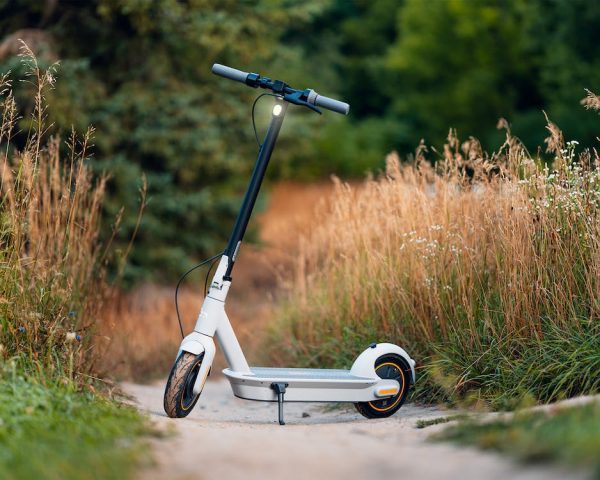We all love our scooters, don’t we? They’re a handy way to zip around town and enjoy the wind in our hair. But there’s one thing that can really put a damper on your scooter enjoyment: rust. Not only does it look bad, but rust can cause serious damage to your scooter’s parts if left unchecked. The good news is that with some care and preventative measures, you can keep rust at bay and your scooter looking great.
In this article, we’ll guide you through rust prevention tips for your scooter, understanding how rust forms, applying protective coatings, regular cleaning, proper storage techniques, as well as early detection methods. We will also share some professional help if the need arises to remove more than surface rust. By taking some simple steps now, we can ensure our scooters, including electric scooters, mopeds, and motorized scooters, stay spick-and-span for many rides to come!

To prevent rust, it is important to understand how it forms on scooters. Rust typically occurs when bare metal is exposed to oxygen and water, which causes a chemical reaction. This reaction leads to the formation of iron oxide, which is generally reddish-brown in color and can cause damage to the metal. To avoid this, it is important to follow certain steps, such as cleaning the scooter regularly, applying a protective coating to exposed metal, and storing the scooter in a dry place.
Additionally, it is important to check your electric scooter for signs of rust on a regular basis so that any damage can be identified early on and dealt with accordingly. If rust has already set in, it is best to take the scooter to a professional for removal. A professional can assess the damage and safely remove the rust without damaging the scooter. If you would like to try it yourself, there are a number of products on the market that can help to remove rust. However, it is important to follow the instructions on the product carefully to ensure that it is used safely and correctly.
At FamilyHype, we believe that by taking some simple steps, we can keep our scooters looking great and rust-free for many rides to come. We would love to hear your feedback and experiences preventing rust on your scooter. Please let us know in the comments section below!
Key Takeaways
This content is specific to non-gas-powered scooters, so consider the type of scooter you have before taking any of the steps mentioned. We’ll explore how to prevent rust on scooters, from regular cleaning and maintenance to applying protective coatings.
Proper storage and routine inspections are necessary to ensure early rust detection and safeguard your scooter against the damaging effects of rust. We encourage you to be proactive in preventing rust on your scooter – a small effort that promises long-term benefits! If you find yourself in need of additional assistance, professional rust removal services are always available.
Understand The Rusting Process
Rusting is like a thief that stealthily sneaks in when metal and moisture come together, weakening and corroding scooters until they become brittle and mottled. These factors create rust. Environmental factors trigger a series of chemical reactions that cause this wear and tear. Knowing the rusting process can help us better protect our scooters from damage.
To further prevent rust, owners should look for corrosion-resistant materials, wax coatings, and other protective features. Maintaining the proper balance of humidity and temperature can also help inhibit rust formation.
Regular Scooter Care And Maintenance
Keeping your two-wheeler spick and span isn’t just about aesthetics, it’s a surefire way to keep those pesky oxidation issues at bay. We want to ensure that your scooter is running in its best condition for the safety of you and your family.
Let’s delve into the world of regular cleaning and maintenance for scooters in order to keep them in tip-top shape:
- Careful detergent selection: Not all detergents are equal. Make sure to select a detergent that’s specifically designed for scooters to protect the spray paint, fiber, and metal parts.
- Regular application of rustproof products: These help prevent oxidization and should be applied regularly to protect the scooter from wear and tear.
- Frequent inspection for early detection of rust: Make sure to check your scooter for any signs of rust regularly and address any issues as soon as possible.
Finally, let’s explore the world of protective coatings for scooters. Consider investing in a good coating product that’ll protect your scooter from the elements and keep it looking great.

Application Of Rust Protection
Wondering how to give e-scooters an extra line of defense against the elements? Protective coatings are the answer! Different coating types, like a clear coat of rust protection wax or a specialized anti-corrosion spray, can offer protection and prevent corrosion. Application techniques vary, but we recommend adhering closely to product instructions for the best results. When using a spray, be careful not to get it on the braking surfaces. One downside is that these coatings might be a bit sticky. Not only are protective coatings an important part of scooter maintenance, but proper storage is also key.
Now that we’ve covered protective coatings let’s shift gears and discuss another crucial part of scooter rust prevention: proper storage.
Proper Storage
Next up, we’re diving into the importance of proper storage for your trusty scooter. Stowing it away indoors and using high-quality scooter covers are two key strategies we’ll explore. Let’s kick-start this discussion and discover how these methods can significantly prolong the life of your ride, keeping it in top-notch condition!
Indoor Storage
Stashing your scooter indoors isn’t just a smart move—it’s a rust-busting superhero in disguise! By keeping it indoors, we can control humidity levels and optimize space usage. This way, you’re serving your scooter by minimizing its exposure to harsh weather conditions that encourage rust. Now, let’s shift our focus to another powerful ally against rust—using scooter covers! With the help of scooter covers, you can protect your scooter from water and dust damage and extend its life expectancy.
Use Of Scooter Covers
Enveloping your two-wheeled companion in a snug scooter cover can help protect it from the elements, such as dust and water. Weather-resistant materials ensure rust damage won’t occur due to moisture buildup. When discussing scooter covers, it’s important to emphasize this detail to keep scooters in great condition. It’s also important to keep an eye out for early signs of rust formation.
Regular Inspection For Early Detection
By conducting regular inspections, you’ll be able to detect early signs of rust formation on scooter metal, thus allowing for a prompt intervention to protect scooter parts. Understanding inspection techniques and using detection tools can make this task easier. At FamilyHype, we believe in helping others maintain their property; rust prevention is a part of that commitment.
Ready to take it up a notch? Let’s delve into the world of professional rust removal services next.
Professional Rust Removal Services
If you’ve noticed signs of rust on your scooter, you don’t have to panic. Professional rust removal services are here to help! These experts use advanced techniques for removing rust to restore your scooter’s shine and it’s a worthwhile investment for prolonging the lifespan of your ride.

Conclusion
We’ve explored how to prevent rust on scooters, from regular cleaning and maintenance to applying protective coatings. Proper storage and routine inspections also play pivotal roles in early rust detection. At FamilyHype, we highly value the family unit and want our readers to have the best experience possible. That’s why we recommend being proactive in safeguarding your ride against the damaging effects of rust, a small effort that promises long-term benefits! If you find yourself in need of additional assistance, professional rust removal services are always available. Don’t forget to share your feedback and experiences with us!
Frequently Asked Questions (FAQs):
How Do I Keep My Ride From Corroding?
You can prevent rust by applying rust-proofing wax to your scooter or bike’s metal parts and painted surfaces. You can also use a spray for hard-to-reach areas. You should also always keep your scooter or bike clean and dry since moisture can accelerate the process of corrosion. These steps will keep your ride protected for a long time.
How Do You Weatherproof A Scooter Frame?
Duct tape is a common method scooter owners use to make their rides more water-resistant. You can also purchase weatherproof tape for more reliable results.
What Makes Electric Scooters Subject To Rust?
A large percentage of scooter parts are made of steel produced with iron. This makes them more susceptible to rust and corrosion.
Should I Cover My Scooter?
Yes, you should, especially if you are unable to store your scooter indoors. It is not advisable to leave your ride exposed to the elements.
Can Rain Damage Your E-Scooter?
Your scooter should be fine in light rain but don’t ride it in heavy storms or across deep puddles. Water may get into it and cause damage.
How Do You Protect Against Build-Up?
Store your scooter in a low-humidity space. You can also use dehumidifiers to prevent moisture from damaging your ride.
How Do I Take Care Of My Scooter?
Perform regular maintenance to keep your ride in tip-top shape. Also, make sure you wipe your scooter to remove excess moisture when necessary since moist metal is a breeding ground for rust. Keep in mind that moisture can still occur even in cold weather.
Can I Leave My Scooter In The Rain?
No. Do not leave your scooter in the rain since the water may damage your ride’s components. It can also cause rust and corrosion.
Can You Leave My Ride In The Sun?
Leaving your ride under direct sunlight is not advisable, as this can cause your scooter to overheat.
How Do I Protect My Paint?
Keep it clean, and be gentle when you wash it. Using polish or wax to protect the scooter or bike’s paint from the elements is also a good idea.
DISCLAIMER (IMPORTANT): This information (including all text, images, audio, or other formats on FamilyHype.com) is not intended to be a substitute for informed professional advice, diagnosis, endorsement or treatment. You should not take any action or avoid taking action without consulting a qualified professional. Always seek the advice of your physician or other qualified health provider with any questions about medical conditions. Do not disregard professional medical advice or delay seeking advice or treatment because of something you have read here a FamilyHype.com.